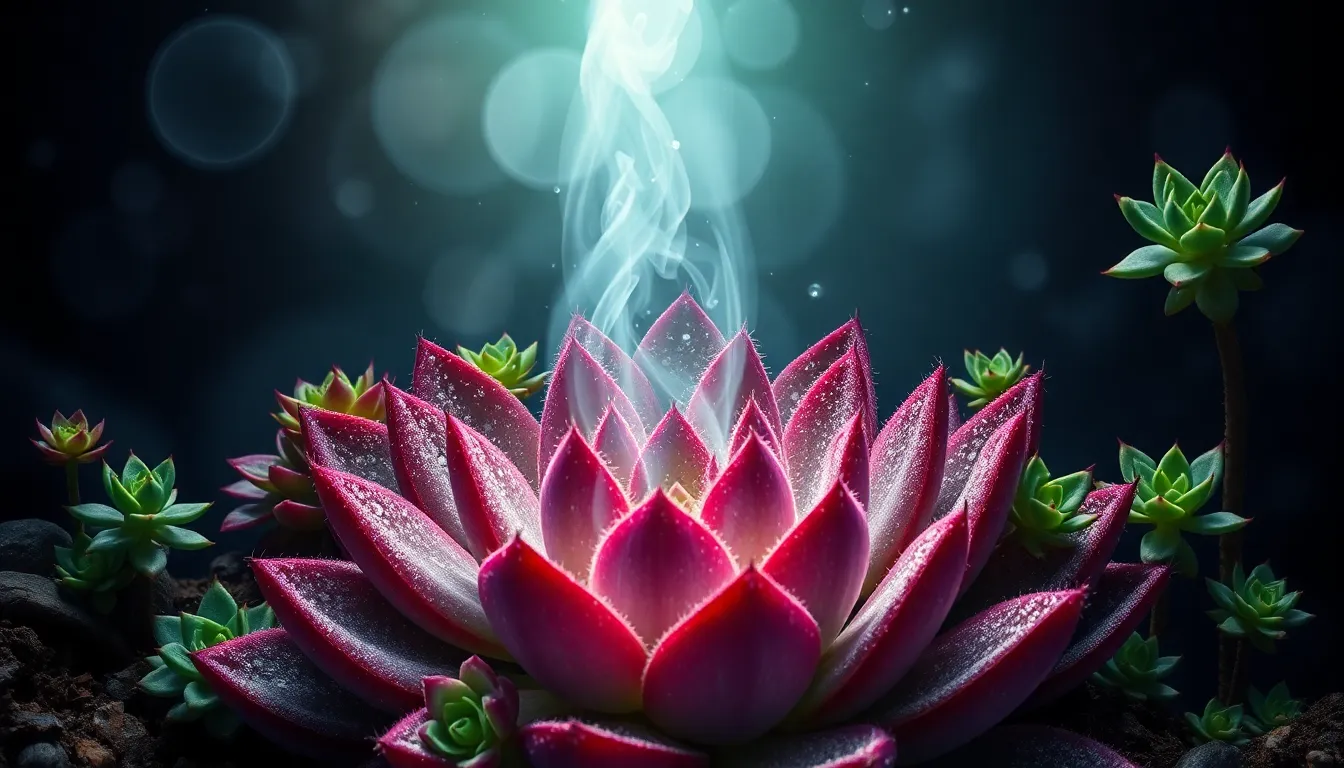The Secret Myths of Succulents: What You Didn’t Know
Succulents have become immensely popular houseplants in recent years, captivating plant lovers with their unique shapes, vibrant colors, and ease of care. However, despite their popularity, many misconceptions surround these resilient plants. In this article, we aim to debunk common myths and reveal lesser-known truths about succulents, enabling you to become a more informed and successful succulent owner.
Myth 1: Succulents Require No Water at All
One of the most pervasive myths about succulents is that they do not need any water. This misconception likely arises from their ability to store water in their leaves and stems. While it’s true that succulents are drought-tolerant, they still require regular watering to thrive.
Proper watering is crucial for succulents, and signs of dehydration can manifest in various ways:
- Wrinkled or shriveled leaves
- Leaves turning brown or crispy at the edges
- Stunted growth
To ensure your succulents stay healthy, water them thoroughly when the soil is dry, and allow excess water to drain out.
Myth 2: All Succulents Are the Same
Another common myth is that all succulents have the same care requirements. In reality, succulents are a diverse group of plants, comprising thousands of species with varying needs. Some popular types include:
- Echeveria: Prefers bright, indirect light and well-draining soil.
- Aloe Vera: Thrives in full sun and requires less frequent watering.
- Jade Plant: Tolerates low light but should not be overwatered.
Understanding the unique characteristics and care requirements of different succulents is essential for their success.
Myth 3: Succulents Thrive in Direct Sunlight
While many people believe that succulents can bask in direct sunlight all day long, this is not true for all species. Some succulents can scorch in intense sunlight, especially during the hottest parts of the day.
It’s important to consider the following:
- Some succulents, like Haworthia, prefer bright, indirect light.
- Others, such as Sedum, can handle full sun but may need protection during extreme heat.
Monitor your plants for signs of sunburn, such as bleached or brown patches, and adjust their placement accordingly.
Myth 4: Succulents Are Indestructible
Many people assume succulents are indestructible due to their hardy nature. However, they can succumb to pests and diseases if not properly cared for. Common issues include:
- Mealybugs
- Spider mites
- Fungal infections
To maintain healthy succulents, check for signs of pests regularly, provide adequate air circulation, and avoid overwatering, which can lead to root rot.
Myth 5: Succulents Only Grow Outdoors
While succulents are often associated with outdoor gardens, many species thrive indoors as well. Indoor succulent growth can be beneficial for several reasons:
- They improve indoor air quality.
- They add aesthetic value to home decor.
- They can thrive in low-light conditions, depending on the species.
Choosing the right type of succulent for your indoor environment can lead to a flourishing indoor garden.
Myth 6: Succulents Are Low-Maintenance
Another misconception is that succulents require little to no maintenance. While they are generally easier to care for than many other plants, they still have specific needs. Common mistakes made by succulent owners include:
- Overwatering or underwatering.
- Using the wrong type of soil.
- Neglecting to provide adequate light.
Understanding and addressing these needs will help your succulents thrive.
Myth 7: All Succulents Are Toxic to Pets
Many pet owners believe that all succulents are toxic to their furry friends. However, this is not entirely true. While some succulents can be harmful, there are several pet-friendly options, including:
- Haworthia: Non-toxic to cats and dogs.
- Christmas Cactus: Safe for pets.
- Burro’s Tail: Does not pose any threat to pets.
Always research specific species if you have pets, to ensure their safety.
Myth 8: Succulents Can’t Be Propagated Easily
Many people think that propagating succulents is a difficult process, but it is quite simple and rewarding. Here’s a step-by-step guide to propagate succulents:
- Choose a healthy leaf or stem cutting from the parent plant.
- Allow the cutting to dry and callous over for a few days.
- Place the cutting in well-draining soil.
- Water sparingly until roots develop, then care for it like a mature plant.
With patience and care, propagation can have high success rates, making it an enjoyable part of succulent ownership.
Conclusion
In this article, we have explored various myths surrounding succulents, from misconceptions about their care to their suitability as pets. By understanding the true nature of these resilient plants, you can enhance your gardening experience and foster healthier plants. We encourage you to delve deeper into the world of succulents, appreciate their diversity, and share your own experiences and questions about succulent care. Happy planting!




